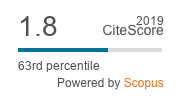Measuring innovation: A state of the science review of existing approaches
Abstract
Purpose: The level of innovation is essential for a company’s or country’s competitive advantage and the ways to measure innovation are manifold. The review aims to give an overview over the continuously growing body on approaches to measure innovation.
Design/methodology/approach: A new definition of innovation measuring is proposed. Based on this definition a structured approach for researching the literature was applied. A selection of 30 advances is discussed and a 4-level-of-analysis-framework is applied to review the broad research on measuring innovation on individual, work team, company and country level.
Findings: The narrative review shows that specific measuring frameworks exists for each level of analysis. Output oriented indicators can be found on all levels, they are complemented by potential enablers on country level, process indicators on company and project level and behavioural indicators on individual level. Approaches specifically focussing on work teams could not be found.
Research limitations/implications: Further research is needed on specific advances on measuring innovation on work-team level.
Practical implications: By discussing key characteristics of the reviewed studies, the analysis will help decision makers to choose a fitting approach and support researchers by identifying open fields of research. It is recommended to research on advances to measure innovation on work team level to close the existing gap.
Originality/value: While influences on innovation are extensively discussed a comprehensive overview over the approaches to identify the effects of modifying these influences is missing. This paper intends to closes this gap.
Keywords
DOI: https://doi.org/10.3926/ic.1254
This work is licensed under a Creative Commons Attribution 4.0 International License
Intangible Capital, 2004-2024
Online ISSN: 1697-9818; Print ISSN: 2014-3214; DL: B-33375-2004
Publisher: OmniaScience








